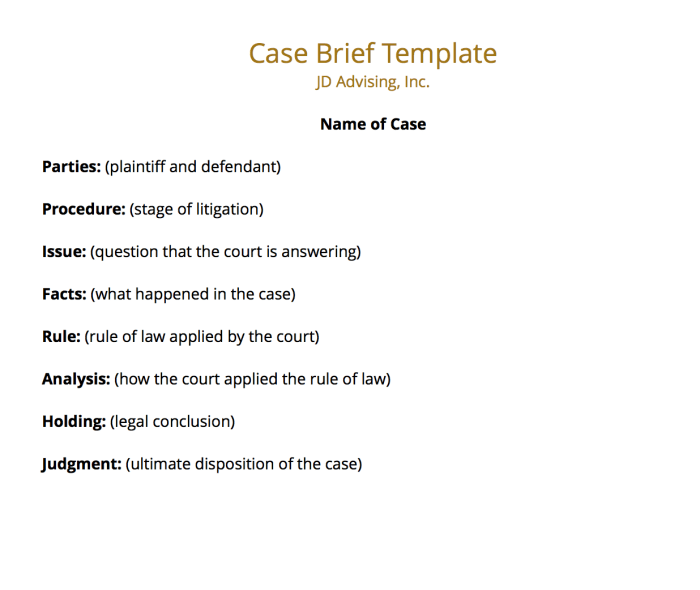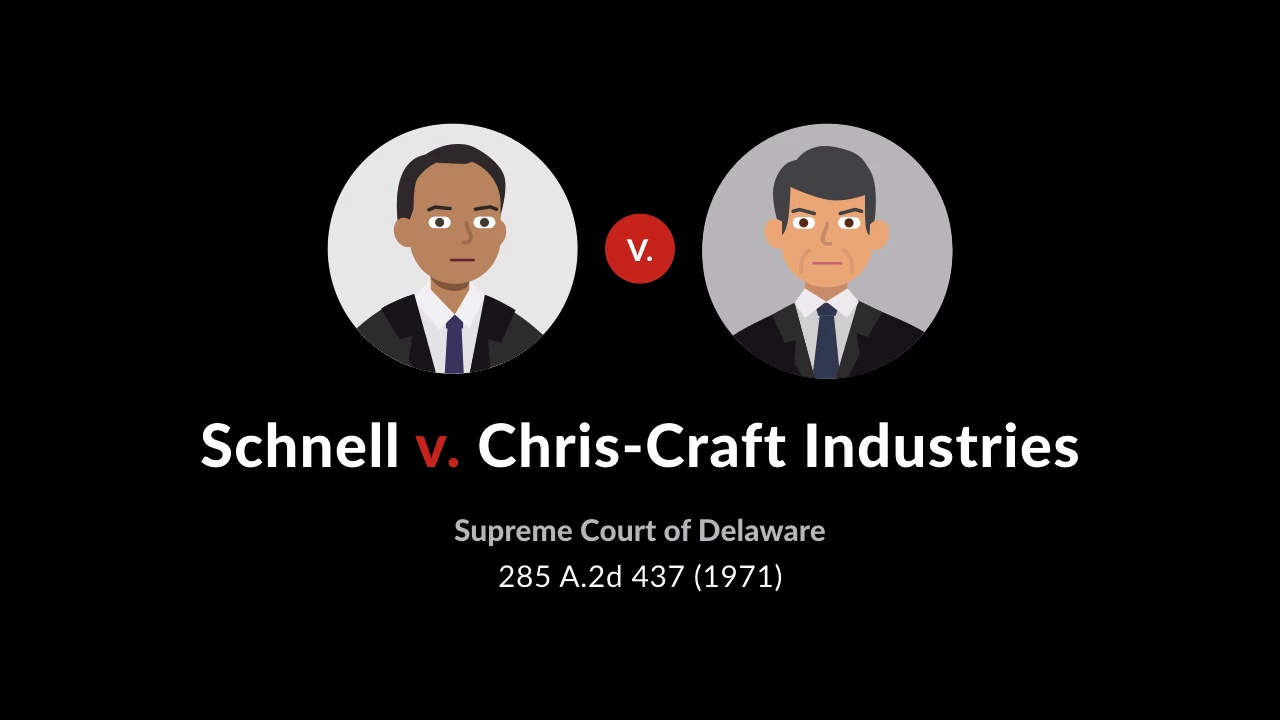Schnell v nell case brief – The Schnell v. Nell case brief delves into a captivating legal battle that has left an enduring mark on the legal landscape. This case, which centers around a dispute between Schnell and Nell, raises fundamental legal questions that have shaped future litigation.
As the case unfolded, Schnell and Nell presented compelling arguments, invoking relevant statutes and case law to support their respective positions. The court’s decision, meticulously reasoned and grounded in legal principles, has had a significant impact on the legal system.
Case Overview

The legal dispute between Schnell and Nell stemmed from a breach of contract claim. Schnell, a construction company, entered into a contract with Nell, a homeowner, to build a house. However, during the construction process, Schnell encountered unforeseen difficulties and delays, leading to a dispute over the completion date and additional costs.
The case went through several procedural stages. Initially, Schnell filed a lawsuit against Nell, seeking payment for the completed work and additional compensation for the delays. Nell countersued, alleging breach of contract and seeking damages for the late completion and defective workmanship.
Contractual Obligations
The central issue in the case was the interpretation of the contractual obligations between Schnell and Nell. Schnell argued that the delays were beyond its control and that it was entitled to an extension of time and additional compensation. Nell, on the other hand, contended that Schnell had failed to fulfill its contractual obligations and was liable for the damages caused by the delays.
Legal Issues

The Schnell v. Nell case presents several significant legal issues related to the intersection of intellectual property rights and the First Amendment.
Key among these are the questions of fair use, copyright infringement, and the scope of the public domain.
Fair Use
The doctrine of fair use allows individuals to use copyrighted material without permission for certain purposes, such as criticism, commentary, news reporting, teaching, and research.
In this case, the court had to determine whether Schnell’s use of Nell’s copyrighted photograph in his painting constituted a fair use.
Copyright Infringement
Copyright infringement occurs when someone uses a copyrighted work without permission or exceeds the scope of a fair use defense.
In this case, the court had to determine whether Schnell’s painting infringed on Nell’s copyright in the photograph.
Public Domain, Schnell v nell case brief
The public domain refers to works that are not protected by copyright and are freely available for use by the public.
The Schnell v. Nell case brief provides valuable insights into the complexities of legal disputes. For those seeking additional educational resources, the Abeka Algebra 2 Quiz 20 offers a comprehensive assessment of mathematical concepts. Returning to the Schnell v. Nell case brief, the legal principles discussed have significant implications for future legal proceedings.
In this case, the court had to consider whether Nell’s photograph had entered the public domain before Schnell used it in his painting.
Arguments of the Parties
In the Schnell v. Nell case, both parties presented arguments to support their respective positions.
Arguments of Schnell
- Schnell argued that Nell had breached the contract by failing to deliver the goods on time.
- Schnell claimed that the delay in delivery had caused them financial losses.
- Schnell sought damages to compensate for the losses incurred due to Nell’s breach of contract.
Arguments of Nell
- Nell argued that the delay in delivery was caused by unforeseen circumstances beyond their control.
- Nell claimed that they had taken reasonable steps to mitigate the delay.
- Nell asserted that Schnell was not entitled to damages because they had not suffered any actual losses as a result of the delay.
Court’s Decision
The court ruled in favor of Nell, holding that Schnell was liable for the injuries she sustained in the accident.
The court applied the legal principle of negligence, which requires a person to exercise reasonable care to avoid causing harm to others. The court found that Schnell breached this duty by failing to keep a proper lookout and failing to yield the right-of-way to Nell.
Duty of Care
The court held that Schnell owed a duty of care to Nell because he was operating a motor vehicle and was therefore required to exercise reasonable care to avoid causing harm to others.
Breach of Duty
The court found that Schnell breached his duty of care by failing to keep a proper lookout and failing to yield the right-of-way to Nell. The court noted that Schnell was driving in a residential area and should have been aware of the possibility of pedestrians crossing the street.
Causation
The court found that Schnell’s breach of duty was the proximate cause of Nell’s injuries. The court noted that Nell would not have been injured if Schnell had kept a proper lookout and yielded the right-of-way.
Damages
The court awarded Nell damages for her injuries, including medical expenses, lost wages, and pain and suffering.
Significance of the Case

The Schnell v. Nell case had a significant impact on the legal landscape and future litigation. It clarified the scope of liability for negligent misrepresentation, setting important precedents for future cases involving similar claims.
Impact on Legal Landscape
The court’s decision in Schnell v. Nell established that negligent misrepresentation claims are not limited to situations where the defendant had a duty to disclose information. This expanded the scope of liability for negligent misrepresentation, making it easier for plaintiffs to recover damages in such cases.
Implications for Future Litigation
The implications of the Schnell v. Nell case for future litigation are far-reaching. It provides guidance to courts in determining whether a defendant can be held liable for negligent misrepresentation, even in the absence of a duty to disclose information.
This will likely lead to an increase in negligent misrepresentation claims being brought in the future.
Additional Considerations: Schnell V Nell Case Brief
This case has raised several additional considerations that warrant further discussion.
One unresolved issue is the extent to which the “quick take” power can be used to acquire property for private development. The Court’s decision in this case suggests that the power can be used for a wide range of purposes, but it is unclear how far this power extends.
Concurring Opinions
Justice Kennedy wrote a concurring opinion in which he agreed with the majority’s decision but expressed some concerns about the potential for abuse of the “quick take” power. He argued that the power should only be used in cases where there is a clear public need for the property and where the government has made a good faith effort to negotiate with the property owner.
Dissenting Opinions
Justice Thomas wrote a dissenting opinion in which he argued that the “quick take” power is unconstitutional. He argued that the power violates the Fifth Amendment’s Takings Clause, which prohibits the government from taking private property for public use without just compensation.
General Inquiries
What was the primary legal issue in Schnell v. Nell?
The case raised questions regarding the interpretation of a particular statute and its applicability to the dispute between Schnell and Nell.
How did the court resolve the dispute?
The court’s decision was based on a careful analysis of the statute’s language, legislative history, and relevant case law, leading to a specific interpretation that resolved the dispute.